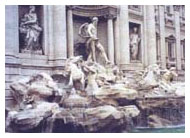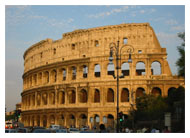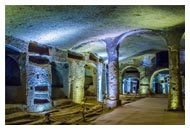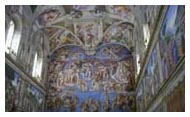
Rome in Detail 10 Day Package
Available Year-round / Call For Group Pricing

Wholesale Tour Packages Since 1987 - Call Us Toll Free: 800.322.0788

Available Year-round / Call For Group Pricing
| Dates |
|---|
| Request a quote or call 800-322-0788 for more information. |
|
Ask About Special Rates for Pastors, Christian Educators, & Custom Groups of All Sizes. No Obligation Group Quotation - Click Here |
Click here for "Frequently Asked Questions"
Price Includes: All motor coach and land transportation, sightseeing, admissions, services of tour director and driver, lodging, meals as specified in tour itinerary, taxes, gratuities to bellhops and waiters at included meals.
Not Included: Cost of obtaining passports or visas, laundry, meals, beverages or sightseeing not included in the itinerary, travel insurance, gratuity to guide, driver, communication charges, & excess baggage fees. Port charges and gratuities to crew are not included on cruises.
Day 1: Departure Day
Take off for Europe on an overnight flight at the start of your educational trip.
Day 2: Arrival, Evening Walking Tour

Arrival in Rome, capital of Italy and one of the most visited cities in the world. You will be met by your tour HOST and transferred to the hotel, the lovely Visconti Palace. The balance of the day is free to become acquainted with this wonderful and diverse city. Immerse yourself in the atmosphere of Rome, where the language and culture is so different from your own. This evening there will be dinner at the hotel, and for those of you who wish to start exploring immediately, there will be a chance to take an introductory walking tour past the famous Spanish Steps and Trevi Fountain. Throw in a coin to ensure your return trip to Rome!
Day 3: Vatican City
Spend today visiting the Vatican City. Your tour director will take you to visit the Vatican Museums, ending with the wonderful Sistine Chapel adorned with Michelangelo's famous frescos. Continue to St Peter's Basilica, the largest church in the world and residence of the Pope. See Michelangelo's Pieta, now behind bullet-proof glass, and rub St. Peter's foot. Ascend to the top of Michelangelo's dome for breathtaking views of St. Peter's Square and Rome itself. Afterward, uncover the history underneath St. Peter's beautiful marble floor in the Catacombs. Dinner at local restaurant. Fellowship following dinner.
Day 4: Rome's Churches

Today you will explore two of Rome's most beautiful churches, St. Peter in Chains and St. Paul Outside the Walls. Marvel at Michelangelo's famous Moses, housed in St. Peter in Chains. The shape of this very ancient church dates back to the 5th century. The Basilica of St. Paul outside the Walls is 2nd in size only to St. Peter's. It's start is attributed to Constantine, who chose the area on the site of the tomb of St. Paul, but the large Basilica you see today was modified by many over the years, ending with the giant renovation after the fire of 1823. This afternoon walk across the Bridge of Angels on your way to Castel St. Angelo. This ancient structure was built by Emperor Hadrian, as his intended Mausoleum. Over the years it has been used as a safe haven for Popes, and there is even a secret walkway that connects to the Vatican. Afterward, you will be taken up to the Piazzale Giuseppe Garibaldi for great views of Rome. Dinner at local restaurant. Fellowship following dinner.
Day 5: Pantheon, Forum, Colosseum

This afternoon a local guide will introduce you to many of the wonders of ancient and modern Rome. Your walking tour of the city starts at the Pantheon. Proceed on to Cathedral of Rome, the Basilica of St. Jonathan in Lateran. Constructed by Constantine in the 4th century, it has been the most frequently reconstructed of all Rome's churches. If the Pope is in Rome, we can hear his weekly sermon at noon in the Piazza San Pietro. From here, pause at the Victor Emmanuel II Monument before continuing on to the Piazza di Campidoglio, another masterpiece of Michelangelo's Design. Pass over the hill and down on into the ancient Roman Forum, where your guide will divulge all of its secrets. You also will step inside the Mamertine Prison. End your sightseeing at the Colosseum, where thousands of people and animals perished during gladiatorial games. The Colosseum first opened in AD 80 and within 100 days of its opening, 5000 wild beasts perished here. The slaughter of both humans and animals continued for three more centuries. Historians believe the Colosseum could hold between 40,000 and 80,000 people depending on how close the seating was. The floor has recently had a plank placed over the middle making it accessible for people to walk over the labyrinth of brick cells, ramps, and elevators used to transport animals and gladiators into the arena. Hear the stories of the games that have fascinated people for years. Dinner at local restaurant. Fellowship following dinner.
Day 6: Appian Way, Catacombs

Today, your first stop will be the Basilica of St. Mary Major, the last of Rome's four Major Basilicas that you will visit. The Basilica was erected in the IV century but underwent many renovations in the course of the years. The building is characterized by many different architectural styles. Its construction is due to a dream which Pope Liberio had the 5th of August 356 AD. During the night, the Virgin invited him to build a church in the place where the following morning he would have found snow. The miracle came true, and the Basilica stands were snow fell. Afterward, you will step inside the Church of St. Ignatius. It is entirely Baroque in style, and can be said to represent the Jesuits' triumphant phase, and that of the Counter Reformation. This was originally part of the Roman College, one of the Society's earliest and finest educational institutions. This afternoon you will have a walking tour of the Appian Way, on your way to the San Callisto Catacombs. Known since antiquity as Regina Viarum, or the queen of roads, the Appian Way was the most famous of the Roman consular roads. It's no longer the main route south out of the city, but it remains an important part of early Christian Rome, its verges lined with the underground burial cemeteries, or catacombs, of the first Christians. In the San Callisto Catacombs, all third-century popes (of whom San Callisto was one) are buried here in the papal crypt, and the site features some well-preserved seventh- and eighth-century frescoes. Dinner at local restaurant. Fellowship following dinner.
Day 7: Pompeii, Naples

Head south today to the famous Roman remains at Pompeii. It was here that Mount Vesuvius erupted in AD79. You will spend your time today with a local guide, discovering and learning about this opulent town that was buried in ash. Pompeii was founded initially by the Oscans, but soon after was influenced by Cumae, a nearby Greek colony. In the year 80 BC the town fell under Roman domination and became a favorite holiday retreat of rich Romans. Then disaster struck with the eruption of the volcano, and in the space of two days all its inhabitants were buried under a layer of lava. When visiting this site today it is possible to see the extensive and varied ruins and imagine life as it was 2,000 years ago. The major sights include the Antiquarium, Forum, Stabian Baths, Villa of the Mysteries and much more. This afternoon is free to explore and have early dinner (on your own) in Naples. We will also have a brief stop at the Cappella Sansevero to see some of the most incredible marble sculptures in all of Italy. If time allows, those interested in antiquity can explore the Museum of Archeology, one of the most extensive in Italy and home to the excavated wonders of Pompeii. Afterward, return to Rome.
Day 8: Rome's Art, Tivoli

Today is a treat for art-lovers, as you will immerse yourselves in the glories of the Borghese Museum, to see paintings and sculptures collected by the Borghese family. Noted treasures in this museum are many Bernini Sculptures, included the mythical Apollo and Daphne, and other treasures by of Renaissance Art by Titian, Caravaggio, Rubens and many more. The afternoon will be free for resting, shopping, or site seeing on your own. This evening you will be impressed by the sights of Tivoli, which is a short drive from Rome. You will see Hadrian's Villa that testifies to Tivoli's importance as a holiday retreat from the Roman period through to the Renaissance. Begin with a visit to Hadrian's Villa, probably the most complex and elaborate building project he designed. After Hadrian's death it was visited by succeeding emperors until it fell into ruin, and it was only in 1870 that the Italian government decided to pursue excavations, thus revealing this magnificent design. Marvel at the beauty of Rome's splendor sparkling in the valley below. Dinner on your own at a Tivoli restaurant. Return to the hotel for fellowship and packing for the next day's departure.
Day 9: Free Day, Farewell Dinner
Today is unscheduled so that you may continue to explore the culture, history, language, art and architecture of this great city. Rome is one of the most attractive cities in the world and has many diverse activities. Why not search out the many fountains of Rome, which are masterpieces of design and sculpture. The most popular is the Fontana di Trevi. For those who are more predisposed towards history, perhaps you would like to visit the Museo della Civilta Romana which documents life in the city from its beginnings through the Empire. For a marvelous view of the city take a local bus up to Campoglio, the sacred hill of ancient Rome, or visit Palatine Hill, the first of Rome's seven hills to be inhabited. To simply observe the way of life go to the Piazza Campo dei Fiori where there is a picturesque food and flower market. Buy some lunch and practice your Italian. The choice is yours! Special Farewell dinner this evening.
Day 10: Homeward
Return to the United States with many new perspectives and memories.
*The tour itinerary is subject to change or be slightly modified in order to best meet the interests of the group.